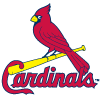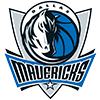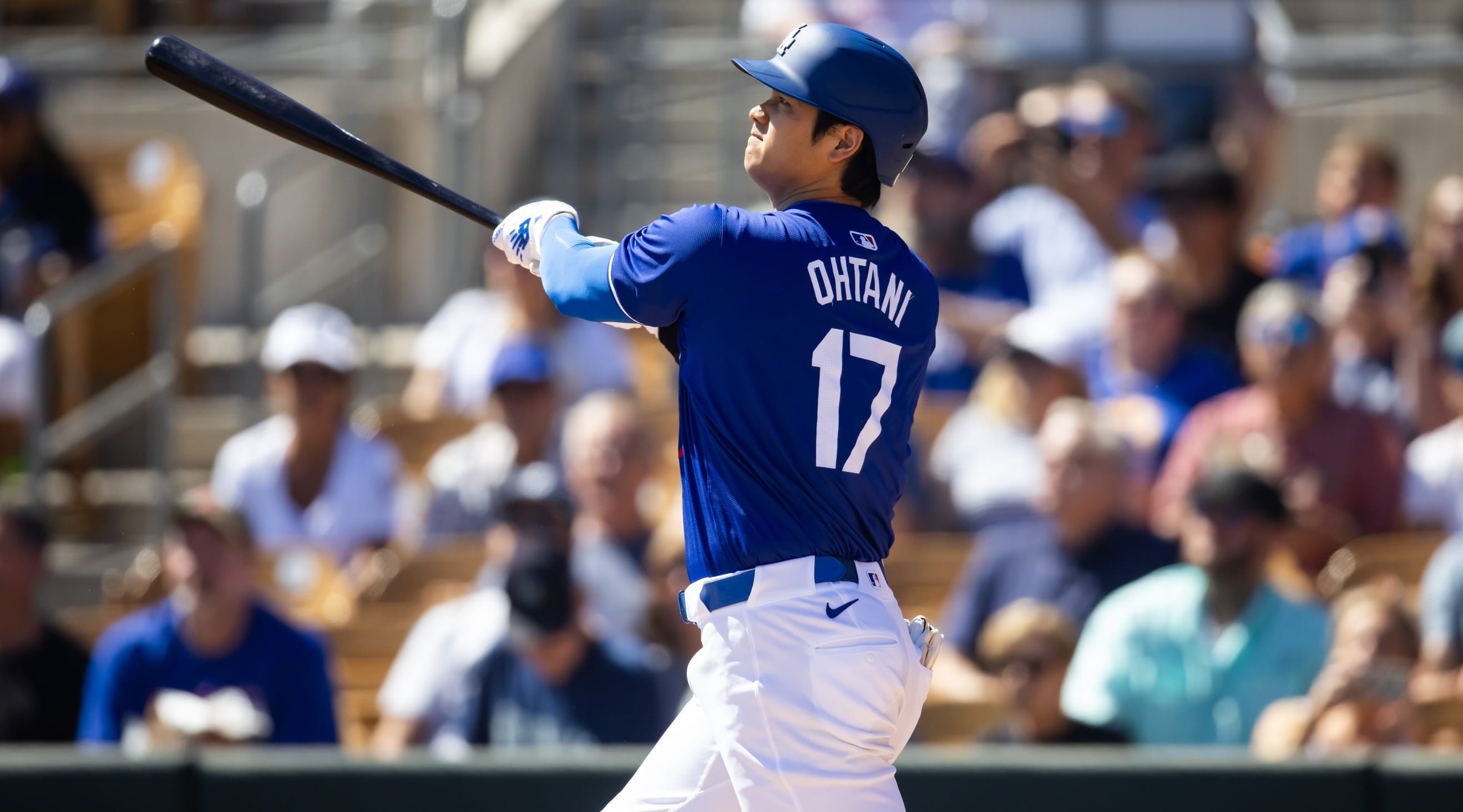2012 Injury Outlook
(The following article appears in the RotoWire Fantasy Baseball Guide 2012.)
Football players are subjected to violent hits and collisions. Basketball stars have to run up and down on the court making sudden starts and stops on a nightly basis, pushing their muscles and ligaments to the limit. But nothing taxes the body like the grind of the MLB season. Players are subjected to blistering summer days as they labor through a 162-game season. In order to prevent injuries from occurring, particularly nagging one, an athlete must take care of their body. To do so they must approach the human body like the machine it is, taking care of each respective part of the system. To better understand the various injuries that could threaten to derail your fantasy team, let's start at the bottom and work our way up.
An athlete's legs are the most used part of the body. The foot, ankle, knee and hip are aligned in an arrangement of dependent connections. Each joint works in unison with the others to perform a desired action such as running or jumping. Much like an iron chain, if one of these links is weakened or not functioning properly, the strength and ability of the entire chain is compromised. The muscles and ligaments of the other links must undergo a compensational shift to withstand the change. Unfortunately even the smallest of shifts can increase the player's risk of suffering another injury to muscles or ligaments in
2012 Injury Outlook
(The following article appears in the RotoWire Fantasy Baseball Guide 2012.)
Football players are subjected to violent hits and collisions. Basketball stars have to run up and down on the court making sudden starts and stops on a nightly basis, pushing their muscles and ligaments to the limit. But nothing taxes the body like the grind of the MLB season. Players are subjected to blistering summer days as they labor through a 162-game season. In order to prevent injuries from occurring, particularly nagging one, an athlete must take care of their body. To do so they must approach the human body like the machine it is, taking care of each respective part of the system. To better understand the various injuries that could threaten to derail your fantasy team, let's start at the bottom and work our way up.
An athlete's legs are the most used part of the body. The foot, ankle, knee and hip are aligned in an arrangement of dependent connections. Each joint works in unison with the others to perform a desired action such as running or jumping. Much like an iron chain, if one of these links is weakened or not functioning properly, the strength and ability of the entire chain is compromised. The muscles and ligaments of the other links must undergo a compensational shift to withstand the change. Unfortunately even the smallest of shifts can increase the player's risk of suffering another injury to muscles or ligaments in a different location of the chain.
LOWER LEG STRAINS
The most notorious lower leg injuries known to offset this balance is a strained muscle. The quadriceps and hamstring muscle groups sit on the anterior and posterior sides of the thigh, respectively. Each group is responsible for motion at the hip and knee and work together to accelerate and decelerate the leg during activity. However, the sudden starts and stops necessary to run the basepaths or explode out of the batter's box make these muscles susceptible to strains. If one leg is strained or even one muscle, the other muscles began to compensate causing other problems to arise. Furthermore, the healing process is often a tedious one as new tissue must be laid down to repair the torn muscle fibers. Often players will return to activity before the muscle is at full strength and miss additional time after they aggravate the injury site.
Multiple players suffer lower leg strains each year and last season was no exception. Outfielders Jose Tabata, Matt Holliday and Mike Stanton all missed time with quadriceps strains last season while Nelson Cruz, Carl Crawford and Jose Reyes all missed time with hamstring strains, often making multiple appearances on the disabled list.
Any prudent fantasy owner will not take these seemingly minor injuries lightly and understand these players come with an increased inherent injury risk, particularly the veteran players. Cruz is capable of putting up impressive power numbers, as evident by his monster postseason, but the Texas outfielder has made five trips to DLover the past two seasons with hamstring and quad problems.
Strains are not the only issue to affect the lower leg. Sprained ligaments and ruptured tendons often occur in traumatic fashion. Catchers and aggressive base-runners are the players at the greatest risk for these types of injuries. The most infamous of injuries from 2011 occurred in San Francisco when catcher Buster Posey suffered a broken fibula and three torn ankle ligaments following a violent collision at home plate. Posey needed surgery to repair the break and has spent the last few months aggressively rehabbing in order to be ready for spring training. The Giants anticipate having him available when the season starts and plan on using the former Rookie of the Year at first base occasionally to protect their star from excessive wear and-tear on his lower extremities.
Arizona's Stephen Drew suffered a similar injury last season while sliding into home and also needed surgery to fix his fractured right ankle. Unfortunately for Drew, his injury occurred two months after Posey's and it appears his rehabilitation could carry over into spring training.
Fantasy owners should take the case of the Angels Kendrys Morales to heart before investing heavily on a player still recovering from a broken ankle. After breaking his fibula and tibia while celebrating a walk-off win in May of 2010, Morales missed all of the 2011 season after scar tissue developed around the joint and a second surgery was required. With Mark Trumbo and the newly signed Albert Pujols manning the corners in Anaheim, it will be interesting to see how the Angels proceed with Morales, who received clearance to begin jogging in December.
Of course Trumbo has an injury of his own to manage. A stress fracture in his right foot prematurely ended his season and a setback in November prevented him from playing winter ball. He will be behind schedule as he attempts to learn a new position after moving across the diamond from first to third. Stress fractures, particularly in the foot, need substantial amounts of time to completely mend and it looks like the Angels will handle Trumbo carefully, proceeding with extreme caution.
A traumatic ankle injury doesn't require an accompanying fracture to be problematic. Just ask fantasy owners who had Rickie Weeks, Andrew McCutchen, or Josh Beckett last season and were forced to play without the help of these players after they all suffered sprained ankles of varying degrees. Once a ligament has been pushed past its yield point, the strength and integrity of it are forever altered. Once an ankle has been sprained it is more susceptible to being aggravated and re-sprained.
Furthermore, aggressive treatment could actually make the player more susceptible to other injuries. For example, plagued by chronic ankle issues following a sprain in 2010, Phillies first basemen Ryan Howard received multiple cortisone injections to relieve excessive inflammation. However, one of the side effects of cortisone includes the weakening of tendons and it seems reasonable to believe these injections played a part in Howard's ruptured Achilles tendon. Injured in the final at-bat of Philadelphia's season, Howard underwent surgery to repair the tear and is expected to miss the start of the regular season.
KNEE INJURIES
Moving up the leg we come to the knee, a joint just as vulnerable to acute and chronic injuries. The patella (kneecap) sits within the tendon of the quadriceps muscle, increasing the amount of leverage that the muscle can exercise. Unfortunately, it's poorly protected and can be easily bruised. Bone contusions may not seem like much but the body's natural defenses treat the injury like a fracture. The contusion can be minor and limit a player for a brief stint, as was the case with Jair Jurrjens. Initially ruled a strain, MRI revealed the bruise. The pitcher missed the final month of the season but was available to pitch in the instructional league and expects to be ready for 2012.
Bone contusions can also be severe and require surgical intervention to fix. Cleveland's Grady Sizemore suffered a patellar contusion that ultimately needed a specific form of microfracture surgery to repair. The often-injured outfielder initially suffered the injury while sliding and it ultimately sent him under the knife for the fourth time in two years. Surgery for the patella involved the surgeon making tiny holes in the bone to stimulate new bone growth. Sizemore re-signed with the Indians for one year and hopes to stay healthy for the upcoming season.
Under the patella and between the bones of the thigh and lower leg sit the menisci, two fibrocartilage disks that serve as a shock absorber for the knee and provide stability. They are a necessity for pitchers and positional players alike in order to withstand the forces placed on the legs while throwing. Unfortunately, based on their position on the knee, the menisci are prone to tearing when the knee is violently twisted. Once damaged, arthroscopic surgery is needed to repair the injury site. A repair is usually performed when the tear is located on more outer portion of the disk, where more blood flows. However, more often than not a tear is not repaired but instead removed or "cleaned up" in a procedure known as a partial menisectomy. In the short term, the athlete is able to make a quick recovery but their long-term health could be placed at risk. Since the cartilage is removed, further problems, such as arthritis, are more prone to developing in the future.
Third basemen Alex Rodriguez and Chipper Jones both missed time last season rehabbing from surgery on a torn meniscus while pitchers Jon Rauch and Kerry Wood recently had their knees scoped to repair meniscus damage. All four veterans should be ready to go in spring training but come with an elevated degree of risk.
Other players including Miami's Logan Morrison and LA's Andre Ethier are recovering from a different type of arthroscopic knee surgery. These players each underwent a procedure known as a debridement, in which loose bodies and developed scar tissue are removed from the joint to protect the area and allow for full range. Both Morrison and Ethier limped through last season and there's hope their respective surgeries will allow them to be back at full strength for the impending season. Like the veterans mentioned earlier, they may be ready to play but their issues do increase the odds for future problems.
HIP AND GROIN INJURIES
Next up the kinetic chain is the hip and groin. The hip is designed for mobility and also strength. The muscles surrounding the hip provide a high amount of stability that is reinforced by a rim of cartilage known as the labrum. Traumatic hip injuries are often severe (Think A-Rod in 2009), but generally rare. Most of the hip injuries that frequently pop up on injury reports are not nearly as serious. The hip flexor strain was the most popular culprit last season as players like Cameron Maybin, Shaun Marcum and Chone Figgins were sidelined with this ailment. Rest is usually the best course of treatment and a brief stint on the DL is often required. However, as long as the injury is allowed to properly heal and tendinitis does not develop, the athlete can make a quick return.
Hip injuries may be rare, but that doesn't mean the entire pelvis is free from worry. The frequent amounts of stress placed on the area with running, cutting and throwing make players vulnerable to a condition known as athletic pubalgia. Most commonly known as a sports hernia, this condition affects a tiny bit of cartilage that unites the two pubic bones. A hernia of this nature develops as repetitive forces placed through the area are rerouted into the groin and abdominal muscles, resulting in microtears in the muscle. As a result, the abdominal wall and inguinal canal are weakened allowing a hernia to develop and protrude through the area. The hernia causes groin and abdominal pain while limiting hip function.
Surgery is needed to return the herniated protrusion to its normal location and a surgical mesh is utilized to strengthen the area and prevent reoccurrence. This offseason Kevin Youkilis, Stephen Drew, Josh Hamilton and Hunter Pence all underwent the procedure and are slated to be fine by spring training. If you are at all hesitant to draft these players, don't be. The procedure has a significantly high success rate and players are generally able to return six weeks after the surgery. Players such as Jose Bautista, Ian Kinsler and Torii Hunter have all bounced back from the procedure to have productive seasons.
While his Philadelphia teammates Pence and Placido Polanco were undergoing sports hernia surgery, pitcher Cole Hamels needed surgery for a different type of hernia. Hamels suffered an inguinal hernia. In this type of injury, an opening in the groin utilized for the passage of blood vessels and nerves becomes abnormally wide, allowing for abdominal tissue to protrude out. Fortunately the surgery to fix the area is similar and while it may have a slightly longer recovery window, the high success rate remains the same.
With the lower extremity well covered, let's look at the trunk of the body. The trunk in often referred to as the core and includes all the muscles from the neck down to the pelvis. The trunk often takes a pounding during the season, getting beaten and bruised by wild pitches, hard slides and collisions with other players. Contusions and fractures, particularly to the rib cage, are common and the amount of time missed is dependent on the severity of the injury. One trunk injury, the oblique strain, dominated the headlines last season as a large number of players succumbed to the injury. Big names such as Brian Wilson, Brian McCann, Shin-Soo Choo, Evan Longoria and Curtis Granderson all suffered an oblique strain at some point last season.
Located on either side of the rib cage, the obliques are thin muscles that contract along with the opposite side to complete trunk rotation. For a right-handed player, his left internal obliques contract along with his right external obliques to complete a throwing or batting motion. Regardless of the side injured, an oblique strain is extremely limiting since almost every motion in baseball involves trunk rotation. Rest and treatment with modalities like heat and ultrasound can help return a player to action but they must be sure it is completely healed because the obliques have a tendency to be easily aggravated. There's no way to predict the injury and every position is susceptible to it. If one of your players suffers an oblique strain, anticipate a trip to the disabled list.
Back injuries are just as common and also affect the trunk. Strains to the muscles of the back occur frequently and like oblique injuries, every player on the diamond is vulnerable. Players with back strains usually require rest and physical rehabilitation and in some extreme situations, like in the case of reliever Bobby Jenks, surgery may be required to repair the resulting damage.
Surgery is also warranted if the vertebrae or the intervertebral discs of the spine are damaged. David Wright and Clay Buchholz both missed time last year with stress fractures in their back but appear poised to bounce back in 2012. A bigger cause for concern is a herniated disc.
Intraverterbal disks lay in-between each vertebrae of the spine and like the menisci of the knee provide stability and act as a shock absorber. Unfortunately if constant pressure is applied to one of these discs or the back is violently wrenched, the disc will herniate. This bulge can irritate nerves in the back, resulting in shooting pain into the extremities and often requires surgery to fix. Atlanta's Tim Hudson needed offseason surgery to repair a herniated disc and is expected to be available by the spring. However, back problems of this nature can easily become chronic and it would be wise to keep this in consideration before investing heavily in players like Hudson, Roy Oswalt or Brian Roberts.
SHOULDER AILMENTS
The first link in the upper extremity chain is easily the most complex. The shoulder is a joint designed for mobility, not stability, and is poorly equipped to handle the high demands placed on it with overhead throwing. A capsule of ligaments, muscles and cartilage work in unison to fortify the area but baseball players, pitchers in particular, are at a constant risk of suffering even the smallest injury that can disrupt this harmony and cause serious issues.
Muscles strains and tendon injuries are typical and can be associated with an acute injury or chronic wear-and-tear. The most common injury is to the rotator cuff muscles and their associated tendons. Throwing subjects these muscles to high degrees of stress and can cause the muscle to fatigue. Furthermore, the tendons of these muscles are compacted into a tight space and if inflamed can become pinched or impinged, leaving them open to tears. Former Cy Young winner Brandon Webb saw his career derailed by rotator cuff issues and the research shows the injury can be particularly bad for younger pitchers. Tommy Hanson may be a highly touted up-and-comer but his previous rotator cuff problems are worrisome.
Another common shoulder injury worth noting is the labral tear. The labrum is a fibrocartilaginous ring that deepens the articulation of the shoulder and helps stabilize the shoulder. A tear of the area is painful and can develop into a chronic instability in the shoulder. Pitchers generally develop labrum tears over a period of time as the repetitive motion of throwing slowly weakens the area. For position players, a tear often results following a crash into a wall or a fall while attempting a diving catch. Treatment for this injury is dependent on the severity and pattern of the tear and the amount of resulting instability. If the tear is minor, like in the case of Arizona's Justin Upton in 2010, the muscles surrounding the joint can be strengthened and surgery is unwarranted. However, if the tear is significant, players are often forced under the knife. Fortunately, the procedure has improved in recent years and isn't quite the career killer it once was. Players like Luke Scott and Adam LaRoche have a chance to return for Opening Day but face an uphill battle to be 100 percent.
A less common shoulder procedure isalso gaining notoriety after Johan Santana, and more recently Hanley Ramirez, needed the operation to repair shoulder instability. In the operation known as a capsulorrhaphy, stability is regained by the insertion of a surgical anchor or through the use of thermal probe designed to "shrink" collagen fibers located in the shoulder ligaments and tendons. Both methods result in the joint capsule becoming tighter and more stable. Pitchers like Santana and Chien-Ming Wang require an extended rehab program that often cost the individuals entire seasons. Both Santana and Wang will attempt to return this year. Hanley fans needn't worry quite as much. Positional players often make a much quicker recovery and are back in action after rehabbing during the offseason. Players like Jorge Posada have had solid fantasy seasons following a capsulorrhaphy though Ramirez's shift to third base might cause problems early on.
ELBOW INJURIES
Moving on from the convoluted shoulder, the next area of injury is the elbow. While the joint is less complex, it remains a major cause of headaches for MLB players and fantasy owners alike.
The elbow is a simple hinge joint but is responsible for absorbing high amounts of force associated with throwing. Regrettably, the body isn't always able to meet these demands, resulting in an injury. The most infamous of these injuries is the torn ulnar collateral ligament (UCL). The UCL provides support to the medial or inside of the elbow. If torn, it requires the dreaded Tommy John surgery. Recovery from Tommy John routinely takes a year and has seen an improved success rate. Several big names including Adam Wainwright and phenom Stephen Strasburg will come back from the procedure this season and are must owns in all formats. Other pitchers including Joba Chamberlain and Daisuke Matsuzaka will miss significant portions of 2012 after needing the operation while Dice K's teammate John Lackey will miss the entire season. It is worth noting that pitchers reliant on throwing sliders are at an increased risk for eventual Tommy John surgery and young hurlers like Madison Bumgarner and Michael Pineda carry associated risk.
A different injury, closely related to the UCL sprain, is the flexor strain. The flexor muscle bundle originates at the medial epicondyle of the humerus, the same site as the UCL. It's also area of high stress and can often become inflamed or strained. Eccentric closer Brian Wilson dealt with a flexor strain that ultimately ended his 2011 season. An injury of this nature must be dealt with carefully due to its proximity to the UCL. Scott Baker and Ivan Nova are just two names that missed time with the injury last season.
Routine maintenance on the elbow is often needed in the offseason to remove floating bone fragments or scar tissue from previous surgeries. Cole Hamels underwent a debridement to excise loose bodies while Jake Arrieta and Jonathan Broxton both had bone spurs removed from their elbow. Generally, six-to-eight weeks of rest following surgery is required before a progressing throwing program is introduced. Each of these pitchers is well on their way to being back in time for the spring.
HAND ISSUES
Further down the arm is the wrist, a joint made up of numerous tiny bones and ligaments. The ligaments here easily jammed and sprained which can be exceptionally limiting for batters. A player needs to quickly and freely roll their wrists while swinging to give the bat some extra pop. Any limitation in the joint can make this nearly impossible and can result in a major dip in production, even if the DL is avoided. Carlos Gonzalez struggled last year after suffering a wrist injury and Matt Holliday was a spectator for Game 7 of the World Series after spraining his wrist. Both players should be healthy to start the season and could come at a discounted price.
The fingers and thumbs are the last area of the upper extremity that can be hurt. Fingers are often broken but surgery can be avoided if the bone fragments do not displace. However it's nearly impossible to avoid a DL stint since so much of baseball is dependent on the hands. On the bright side, fingers heal relatively quickly and long-term complications are regularly avoided. However, the thumb is a bit trickier. The thumb is a saddle joint and has higher degrees of motion than the other fingers. It also has several ligaments prone to severe sprains and surgery is often required following a significant sprain or break. Shin-Soo Choo missed two months of an injury-filled season with a fractured thumb while veterans Rafael Furcal and Derrek Lee dealt with nagging thumb injuries throughout the year. However a restful offseason should allow each of these players to enter spring training ready to contribute.
CONCUSSIONS
Finally, it would be unwise to examine injuries without looking at the epicenter of the body, the head. Head injuries, particularly concussions, may be more scrutinized in football and hockey but they are equally as impactful in baseball.
Concussions occur when trauma to the head results in a disruption of normal brain functions like memory, balance, vision and hearing. The length of the symptoms varies with the individual and the severity of the concussion. Sometimes symptoms may disappear after a day or two while others will linger for an extended period of time. Exertional activity may cause the symptoms that had subsided to reappear. Furthermore, the effects of concussions are cumulative, meaning each concussion following the initial injury builds on the previous ones. Brian Roberts and Justin Morneau are perfect examples of how damaging concussions can be. MLB continues to make strides in its concussion protocol but they remain impossible to eliminate.
Injuries are a lingering threat for fantasy owners competing for a shot at the title. A well-utilized disabled list can minimize the damage but the best way to protect your squad is education. Understanding specific injuries can help you make the smart decision as well as give you a better frame of reference of who to avoid on draft day.
























